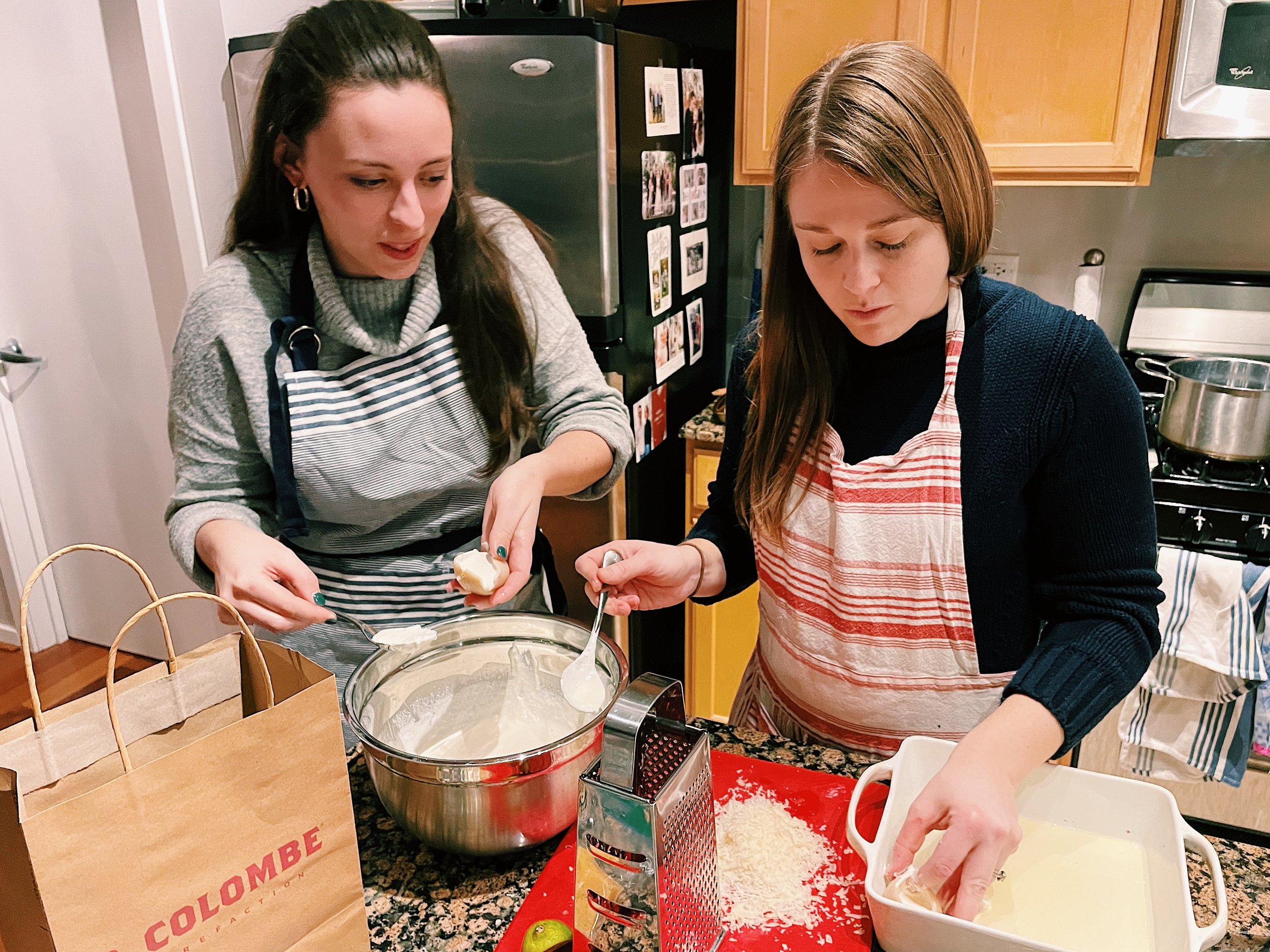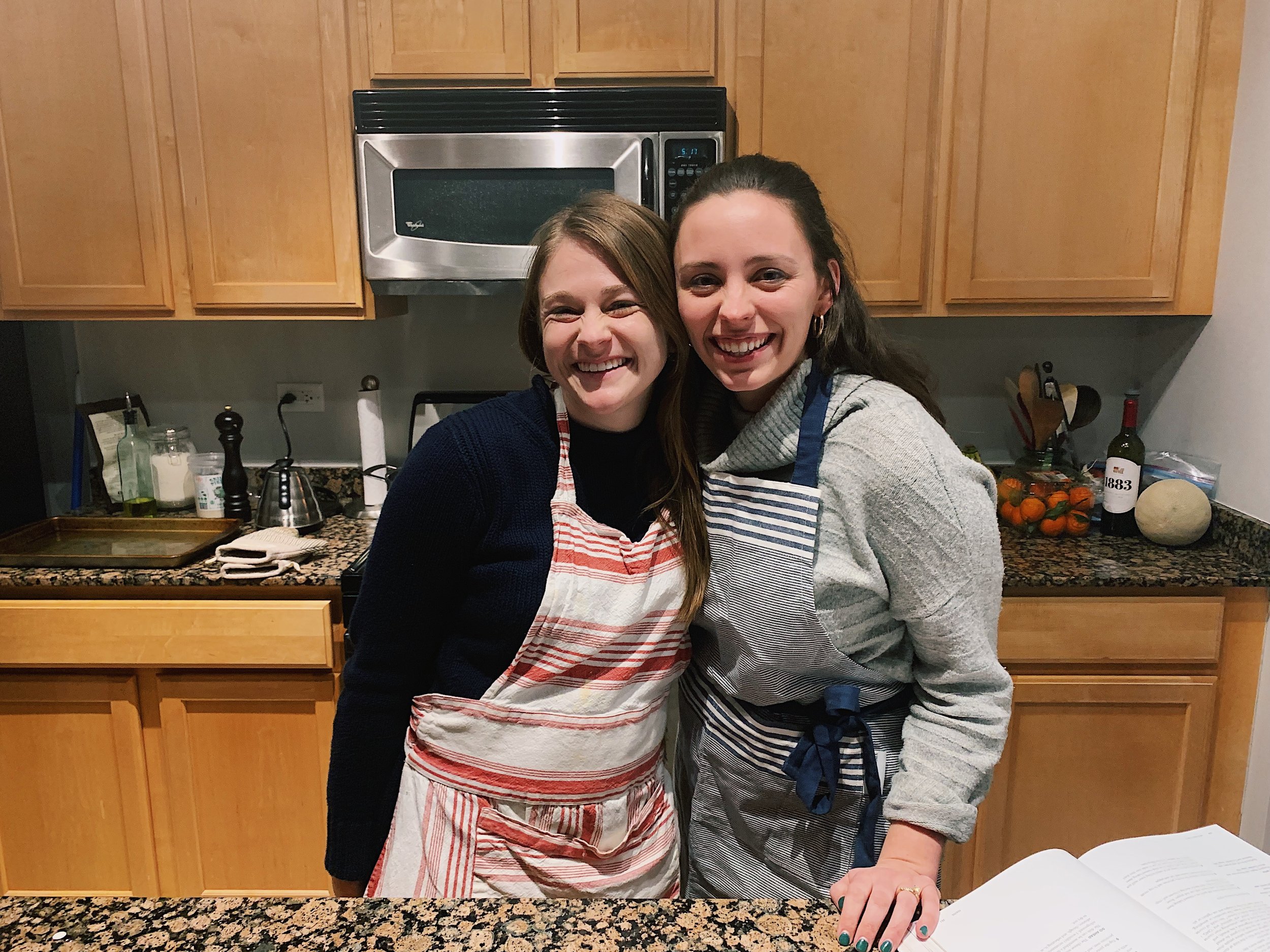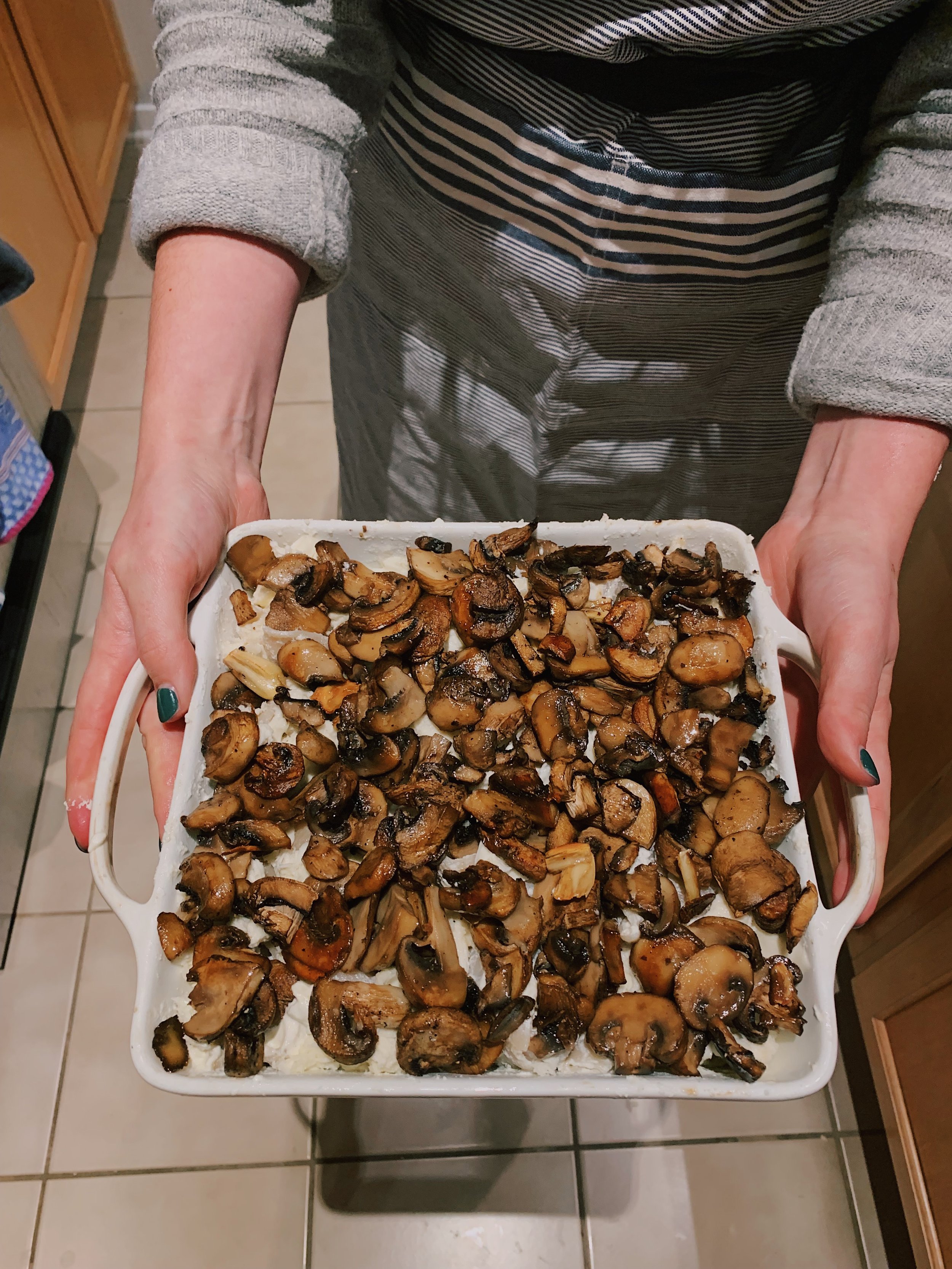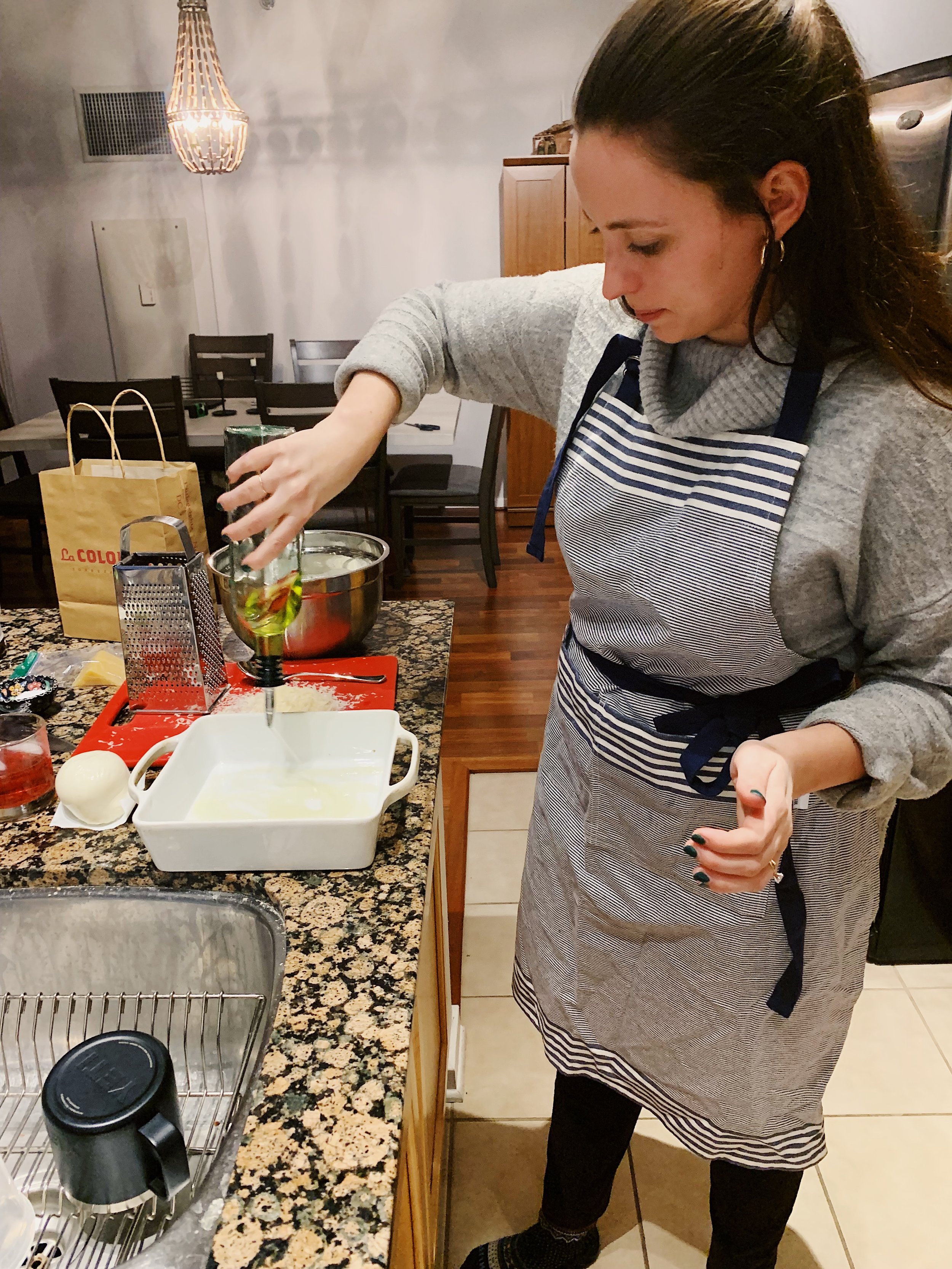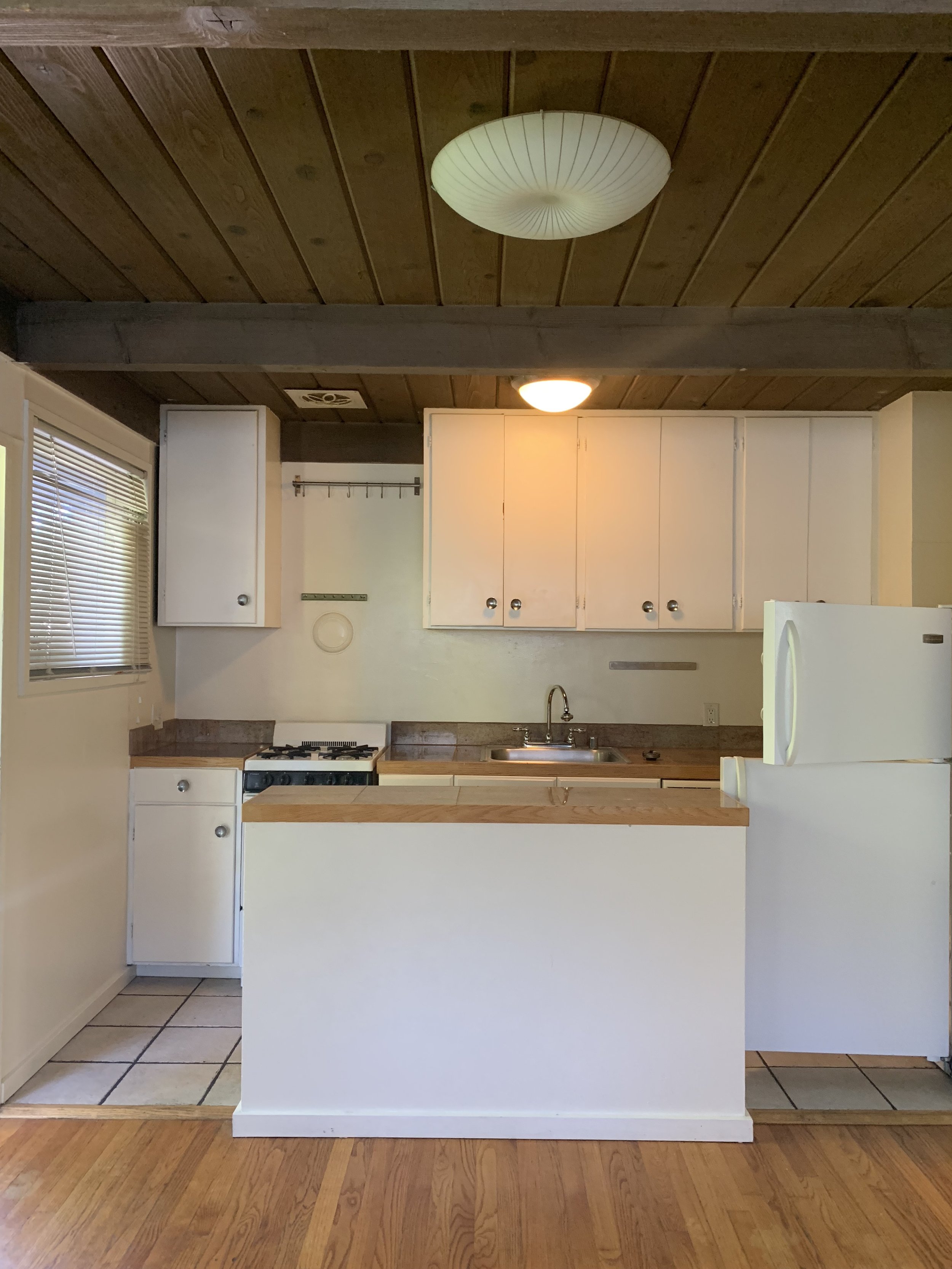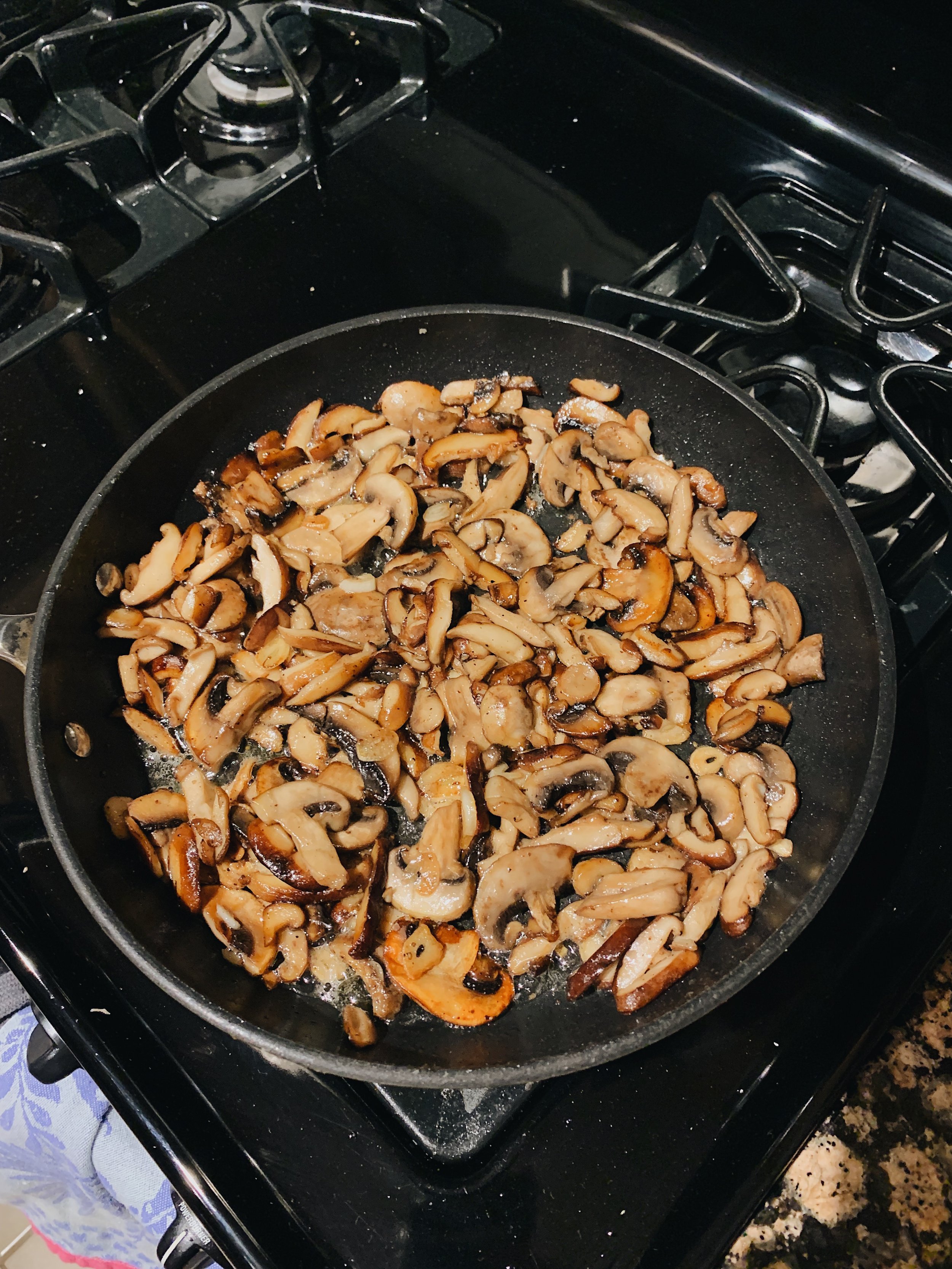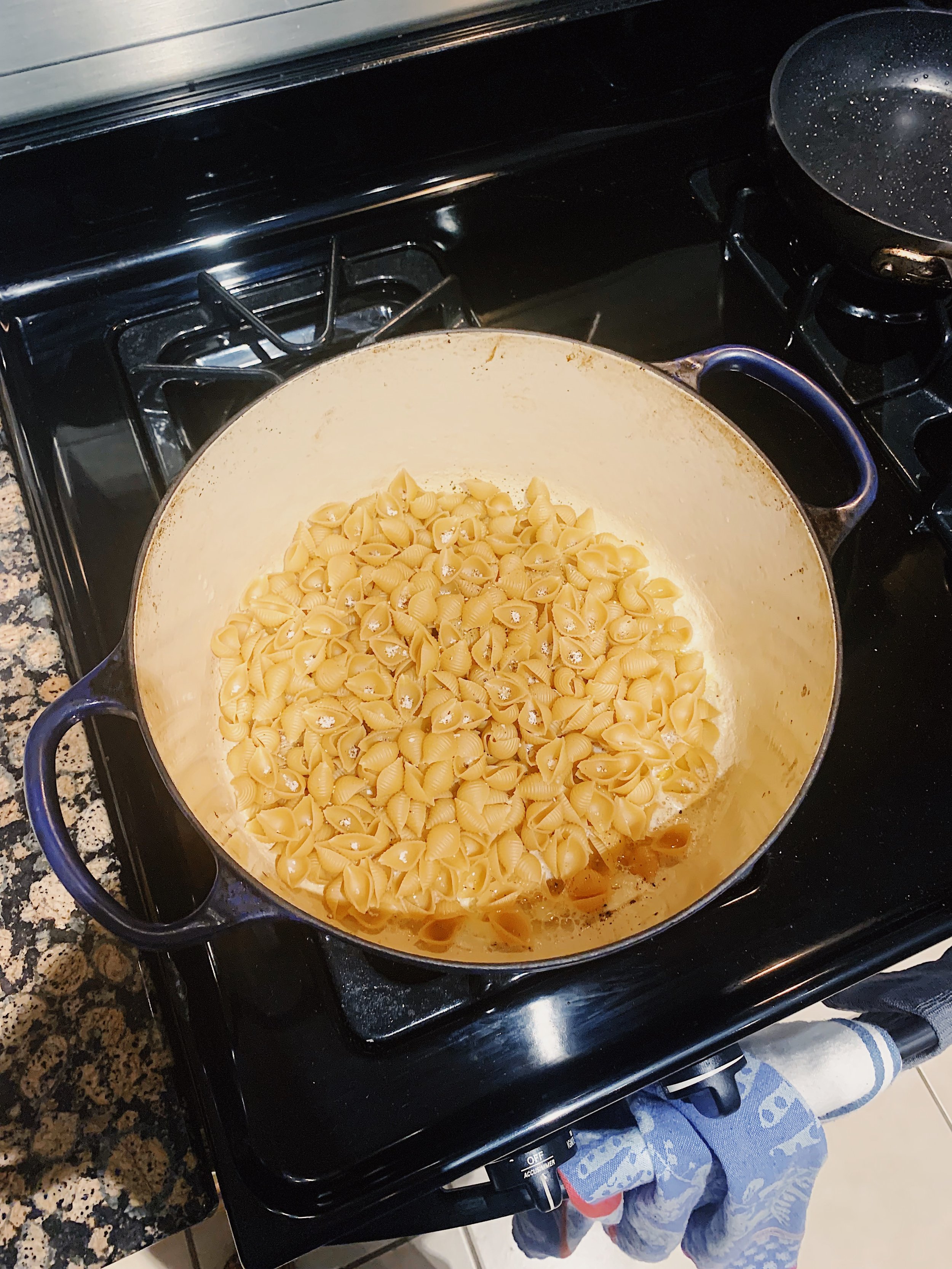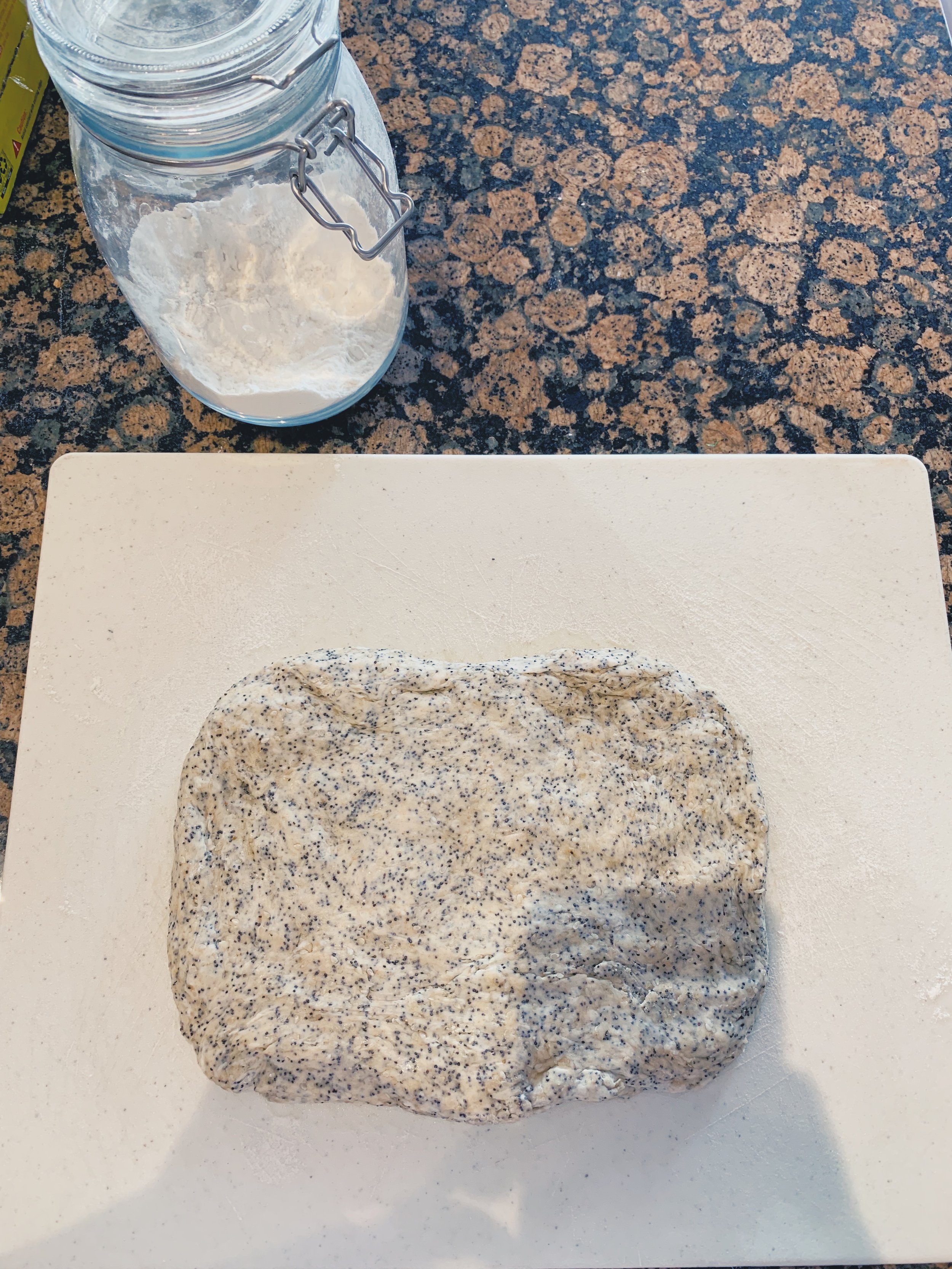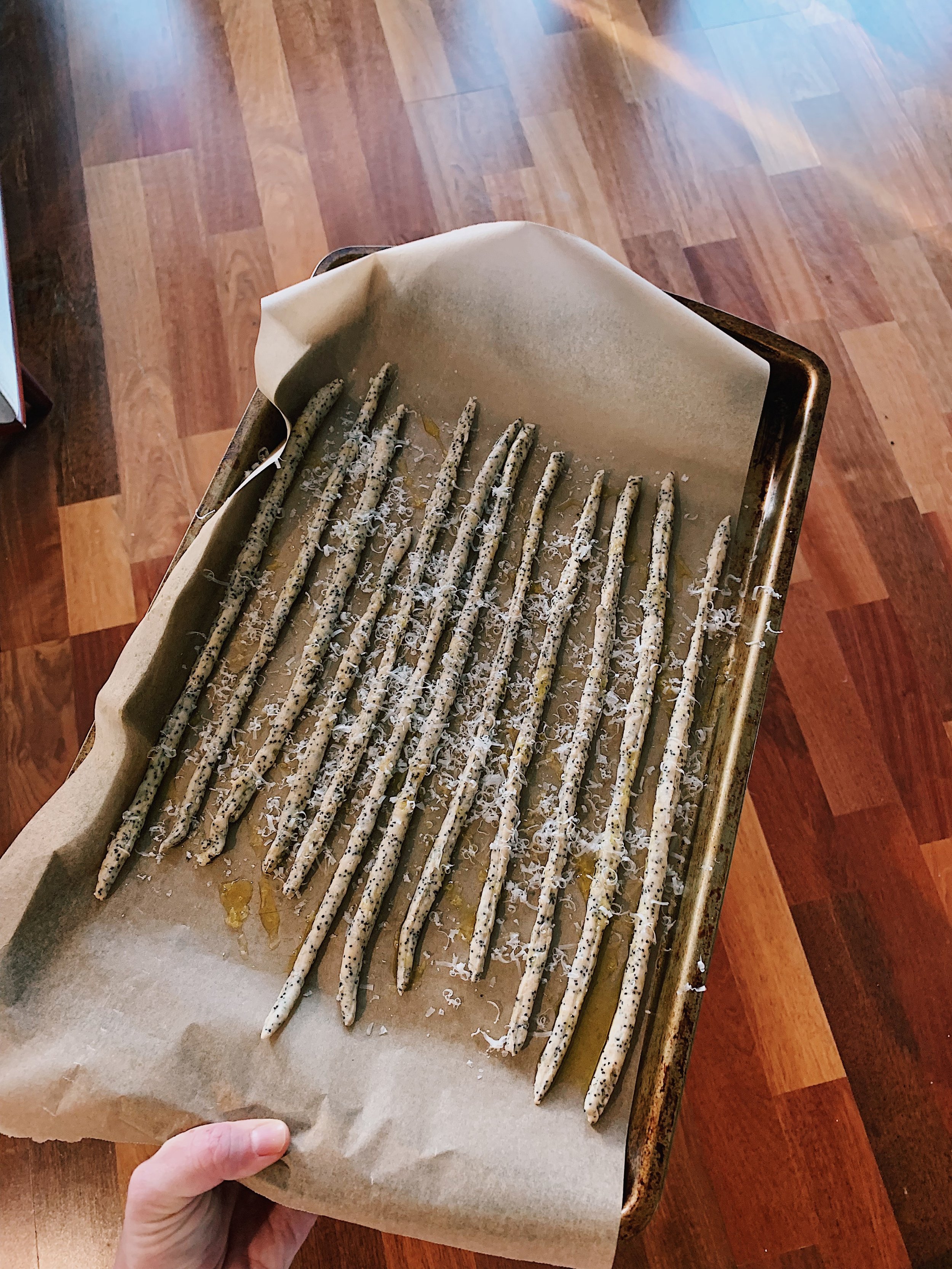I put this recipe off for as long as possible. Not because it didn’t sound good, but because it has more dairy than anyone should eat in a single meal. I’m talking heavy cream, ricotta, parmesan, and mozzarella all filling every imaginable nook and cranny of a 2 quart dish. A delicious stomach ache just begging to happen.
Well I certainly wasn’t going to eat this one alone. We invited two dear friends over, Elli and Christian, to help us eat it and make it. Why not make the Great Dairy Assembly, as I’m now going to call it, a communal activity?
Before our friends arrived, I went ahead and started the mushrooms roasting in the oven as well as bringing a pot of salted water to a boil for the pasta. Alison recommends a variety of mushrooms, but I just went for the straightforward pre-sliced baby Bella mushroom cartons at TJ’s. I’ve cooked a lot of her mushroom recipes lately, and I was honestly over spending $7 for 5oz. of little shiitakes.
I scored some gluten free shells on Amazon, Tinkyada Brown Rice Grand Shells. The packaging says to boil the shells for 15-16 minutes for al dente, so that’s what I did. The edges of the shells were very cooked by that point, but the centers were a little tougher, harder. I definitely didn’t cook them perfectly, but once you’ve poured out the pasta water, it’s hard to go back. Oh well. I did as Alison instructed and poured the newly cooked shells onto an oiled baking sheet to help them cool and not stick together. This mostly worked.
Now for the Great Dairy Assembly. Elli took each shell and filled it with the Great Dairy Mixture, consisting of ricotta, heavy cream, shaved parmesan, salt and pepper. One by one, she placed them in the baking dish while I desperately tried to arrange them without letting them tip over and spill their filling. Which turned out to be very difficult. Despite the rather al dente state of the pasta, the shells wanted desperately to let the cheese run out. We made a valiant effort to keep them all intact, but it sure was messy. With the shells filled and haphazardly arranged, we stuffed torn pieces of a mozzarella ball into whatever crevices we could find. Next, we poured heavy cream over the dish, followed by the roasted mushrooms. We baked the dish as instructed, about 35 minutes in total.
Meanwhile, Elli and I prepared the herbs and lemon zest for topping the pasta, as well as Alison’s Perfect Herby Salad. We used lots of parsley, tarragon, and chives. For the salad, I threw in a bag of mixed greens. Alison’s perfect salad dressing is exactly how I dress my salads 90% of the time anyway: olive oil, lemon juice, salt, and pepper. It’s truly all I need to enjoy a salad.
The shells came out bubbling hot and the mushrooms had turned an even richer brown. We topped them with the fresh herb mixture, and yes, more parmesan. The four of us finished off every shell but one, which wasn’t a Minnesota-nice move, I swear — we were just too full to fathom eating one more shell.
206 and 207 recipes cooked, 18 to go.


